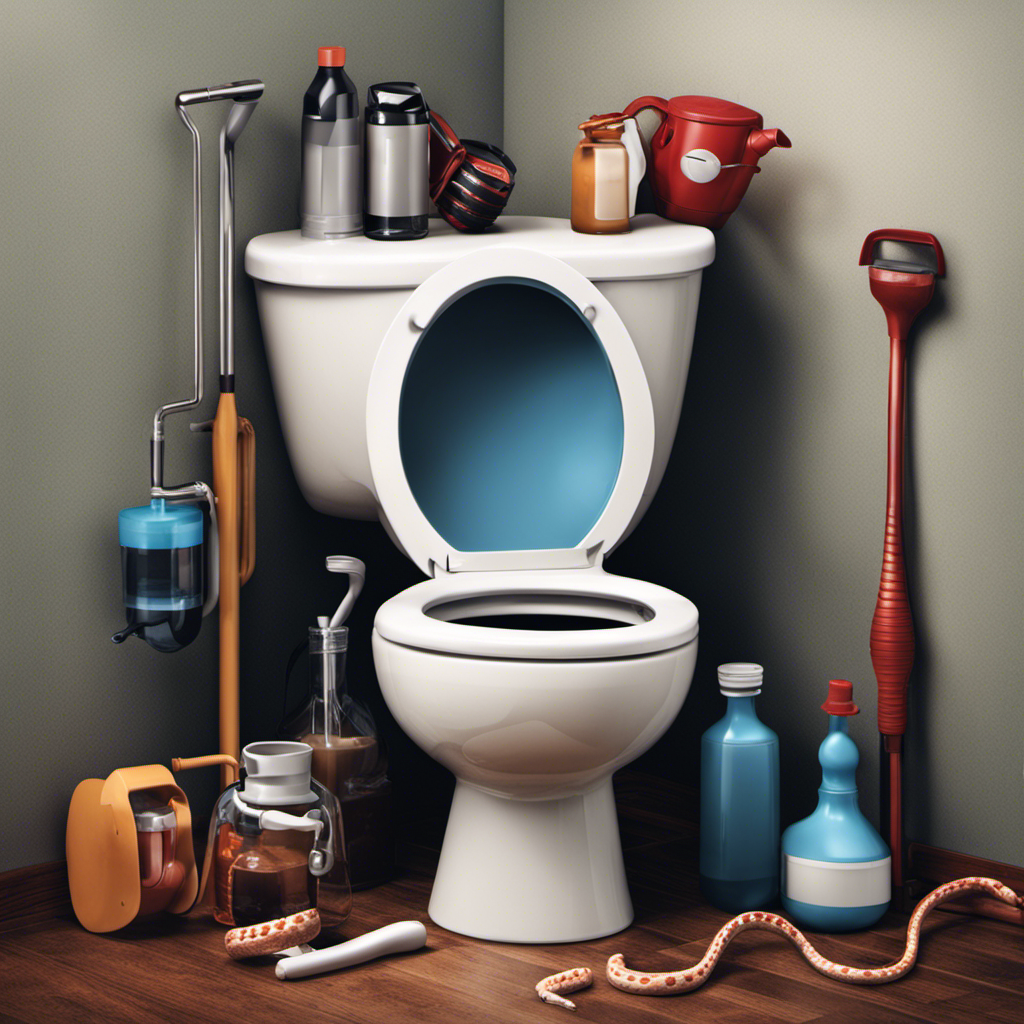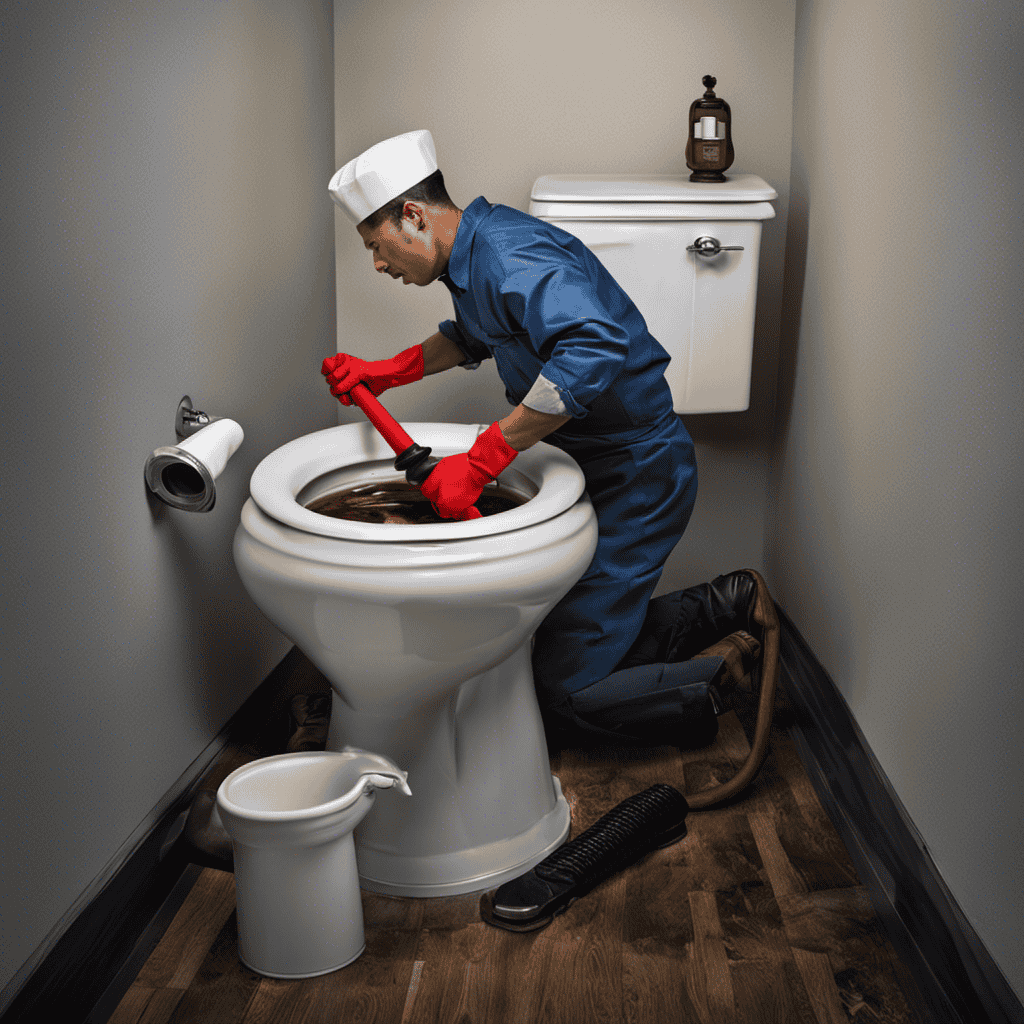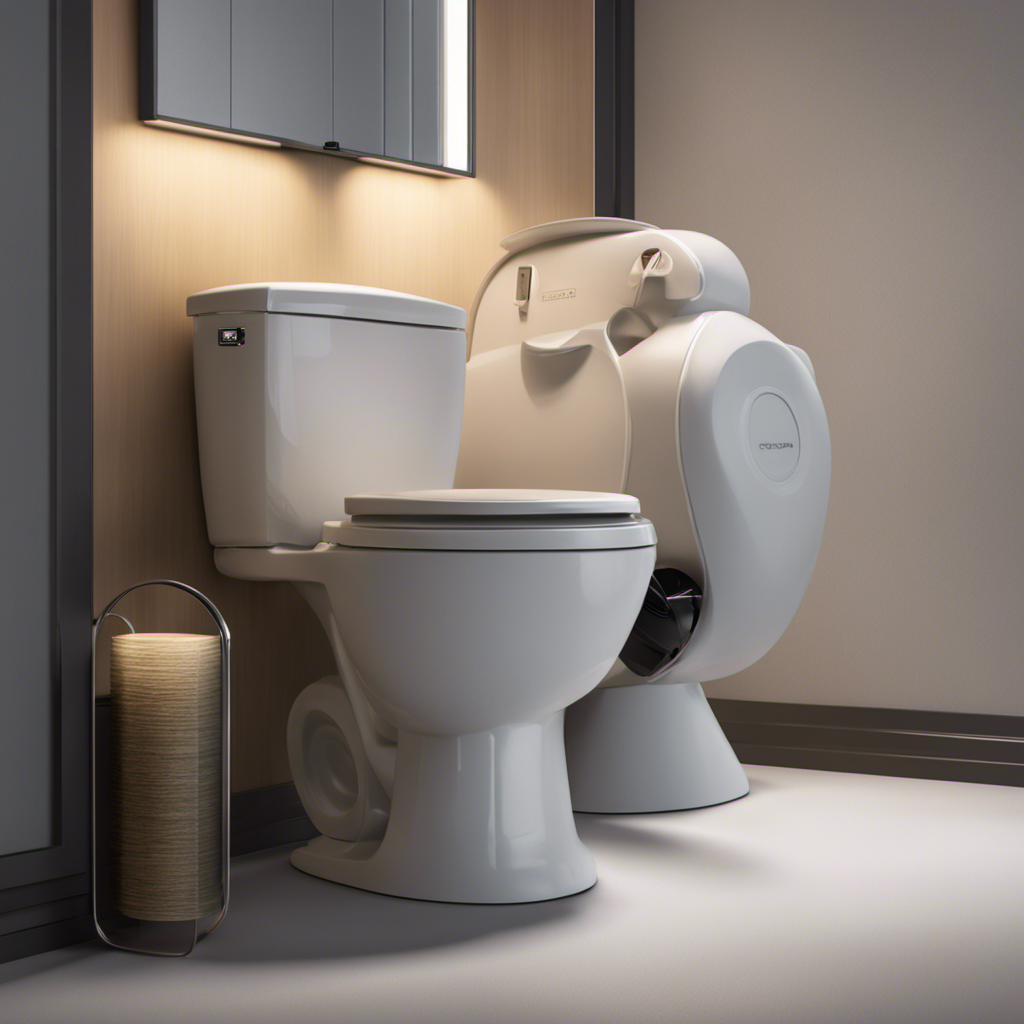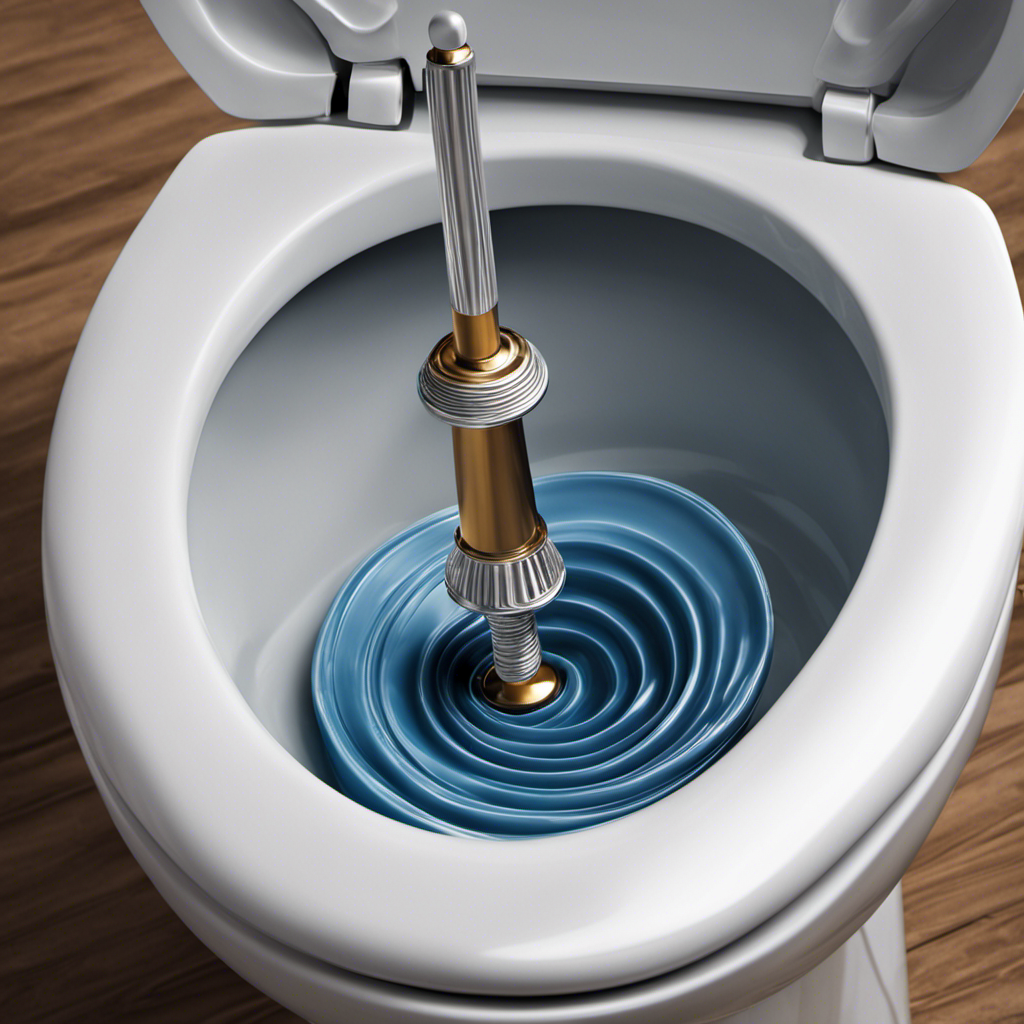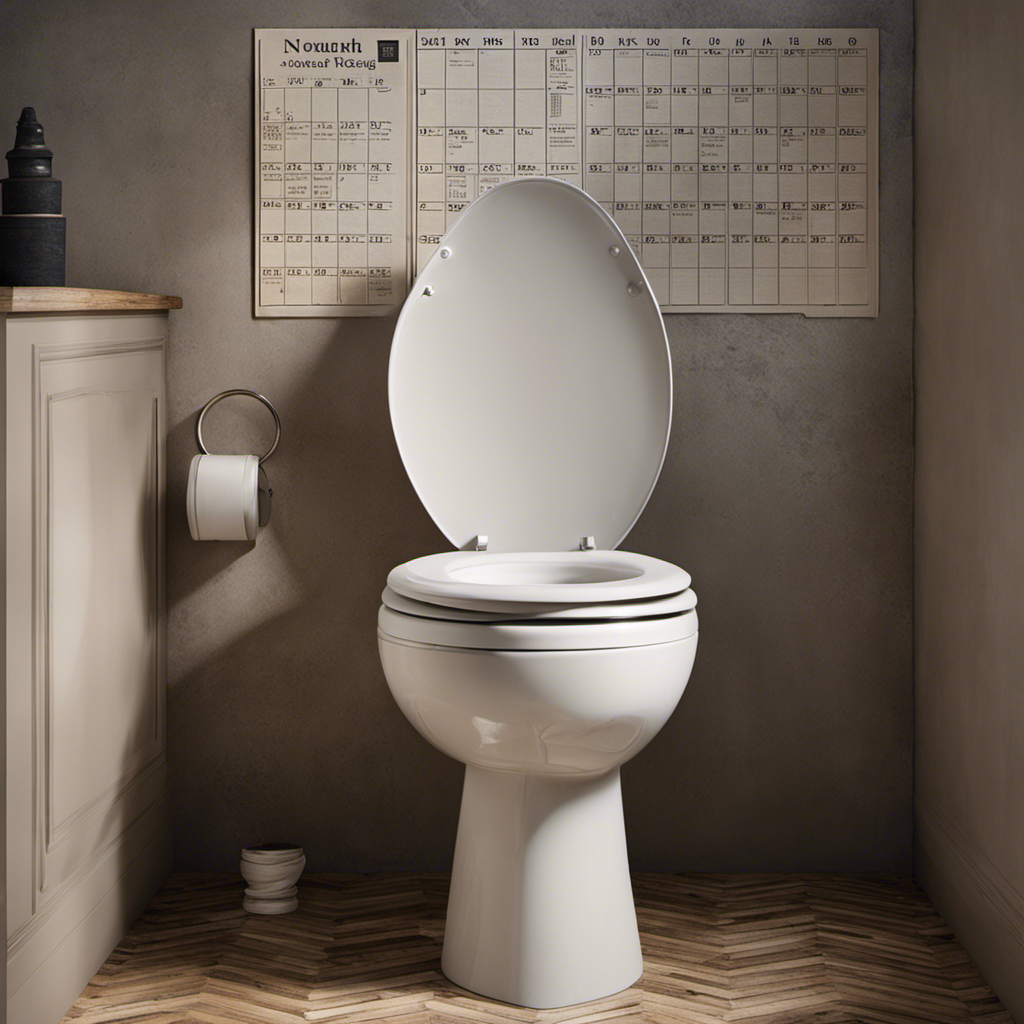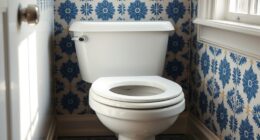I’ve tried everything, but nothing seems to work. My frustration levels are rising as I stare at the clogged toilet, wondering how on earth I’m going to fix this mess.
But fear not, because I’m here to share with you a step-by-step guide on how to unclog a toilet when all else fails. From common causes of clogs to alternative methods, I’ll equip you with the knowledge and tools needed to conquer this plumbing nightmare.
So, let’s dive in and get that toilet flowing again!
Key Takeaways
- Flushing excessive amounts of toilet paper at once can cause a clog.
- Promptly addressing clogs is important to avoid further damage.
- Plunging with a flanged plunger and using a toilet auger are effective methods for unclogging toilets.
- If DIY methods fail, it is important to call a professional plumber to avoid potential damage and ensure a thorough resolution.
Common Causes of Toilet Clogs
One of the most common causes of toilet clogs is when you flush excessive amounts of toilet paper at once. To prevent a toilet clog, it is important to use an appropriate amount of toilet paper and avoid flushing large quantities in one go.
Signs of a serious toilet clog include water backing up or not draining properly, a gurgling sound when you flush, and a foul odor coming from the toilet. If you notice any of these signs, it is crucial to address the clog promptly to avoid further damage.
In the next subtopics, I will discuss various methods to unclog a toilet when nothing seems to work, providing step-by-step instructions to help you resolve the issue.
Tools and Supplies You’ll Need
To get started, you’ll need a plunger and a bucket for this unclogging process. Here are the tools and supplies you’ll need to unclog your toilet effectively:
-
Plunger: This is the most common tool used to unclog toilets. Make sure it has a good seal against the drain opening before starting.
-
Bucket: It’s essential to have a bucket nearby to collect any water that may overflow during the unclogging process.
-
Toilet Auger: Sometimes, a plunger may not be enough. A toilet auger, also known as a drain snake, can help in more stubborn clogs. Insert the auger into the drain and rotate the handle to break up the blockage.
-
Protective Gloves: It’s always a good idea to wear protective gloves to keep your hands clean and safe from any germs or bacteria.
Step-by-Step Guide to Plunging
Using a plunger is an effective method for clearing a clogged toilet. Here’s a step-by-step guide on how to plunge your toilet and get it flowing again.
First, make sure you have a toilet plunger with a flange, as it provides a better seal. Place the plunger over the drain hole and push down firmly, creating a seal. Then, quickly pull up to create suction and loosen the clog. Repeat this plunging motion several times until the water starts to drain.
If plunging doesn’t work, you can try using a toilet auger. Insert the auger into the drain hole and turn the handle clockwise, while pushing it further in. This can help break up the clog.
To avoid toilet clogs in the first place, remember not to flush anything other than toilet paper and waste. Avoid using excessive amounts of toilet paper and consider installing a toilet paper holder with a built-in cutter to prevent excessive use.
Alternative Methods to Unclog a Toilet
If plunging or using a toilet auger doesn’t work, you can try pouring hot water into the toilet bowl to help break up the clog. Here is a step-by-step guide for this alternative method:
-
Boil a pot of water on the stove or heat water in a kettle until it’s hot, but not boiling.
-
Carefully pour the hot water into the toilet bowl, aiming for the center of the clog.
-
Allow the hot water to sit in the bowl for a few minutes. The heat will help soften and break up the clog.
-
Flush the toilet to see if the clog has cleared. If not, repeat the process or try another method.
Using natural remedies and DIY toilet unclogging techniques can be a cost-effective and environmentally friendly solution. Remember to exercise caution when handling hot water and always try to use gloves or protective gear.
Preventing Future Toilet Clogs
One way to prevent future toilet clogs is by being mindful of what you flush down the toilet. It’s important to remember that toilets are designed to handle only human waste and toilet paper. Flushing items such as paper towels, feminine hygiene products, or baby wipes can lead to blockages in the pipes. To further promote toilet maintenance and prevent clogs, here are some DIY solutions:
| DOs | DON’Ts | Tips |
|---|---|---|
| Flush only toilet paper | Don’t flush wipes or paper towels | Educate family members about proper flushing habits |
| Regularly clean the toilet | Avoid flushing large amounts of toilet paper at once | Install a toilet paper holder with a small opening |
| Use a plunger if necessary | Do not dispose of solid waste in the toilet | Place a wastebasket near the toilet for non-flushable items |
When to Call a Professional Plumber
When you’re facing persistent or worsening plumbing issues, it’s best to reach out to a professional plumber for assistance. While some minor toilet clogs can be resolved with simple DIY methods, there are certain signs that indicate a serious toilet clog that requires professional attention. Here are four signs that it’s time to call a plumber:
-
Multiple fixtures are clogged: If you notice that multiple fixtures in your home, such as sinks and showers, are clogged along with your toilet, it’s a sign of a main sewer line clog. This requires the expertise of a plumber to locate and resolve the issue.
-
Sewage backup: If sewage starts backing up into your toilet or drains, it indicates a major clog or blockage in your sewer line. This is a serious issue that should be addressed by a professional plumber immediately.
-
Recurring clogs: If you constantly experience toilet clogs despite using DIY methods or plumbing tools, it suggests an underlying problem that needs professional attention. A plumber can identify and fix the root cause of the clogs.
-
Foul odor: If there’s a persistent foul odor coming from your toilet, it could be a sign of a serious clog or sewer line issue. A plumber can assess the situation and recommend the appropriate solution.
Frequently Asked Questions
How Long Does It Usually Take to Unclog a Toilet Using the Plunge Method?
It usually takes a few minutes to unclog a toilet using the plunge method. If this doesn’t work, there are alternative methods like using a toilet auger or a chemical drain cleaner.
Can Using a Chemical Drain Cleaner Damage the Toilet?
Using a chemical drain cleaner can damage the toilet if used improperly. It’s important to follow the instructions carefully and avoid using excessive amounts. Regular maintenance and proper toilet clog prevention can help avoid the need for harsh chemicals.
Are There Any Natural Remedies or Home Remedies to Unclog a Toilet?
When dealing with a clogged toilet, natural remedies can be effective. However, it’s important to weigh the pros and cons. While they are often safe and cost-effective, they may not always solve the problem completely.
What Are the Signs That Indicate a More Serious Plumbing Issue Beyond Just a Clogged Toilet?
Plumbing emergencies can be stressful, but there are signs that indicate a more serious issue. If your toilet keeps clogging despite all attempts, it’s time to call professional plumber services for assistance.
How Can I Unclog a Toilet if I Don’t Have Access to a Plunger or Any of the Alternative Methods Mentioned in the Article?
If I don’t have a plunger or any of the alternative methods mentioned in the article, I can try some toilet unclogging hacks. There are unconventional methods for unclogging toilets that may work.
Conclusion
In conclusion, unclogging a toilet can be a frustrating task, but with the right tools and techniques, it can be easily resolved. By following the step-by-step guide and using a plunger or alternative methods, you can effectively clear the clog and restore your toilet’s functionality.
Just like a skilled surgeon removing an obstruction, you will be able to tackle the problem head-on and have your toilet flowing smoothly again in no time.
Remember to take preventive measures to avoid future clogs and if all else fails, don’t hesitate to call a professional plumber.
